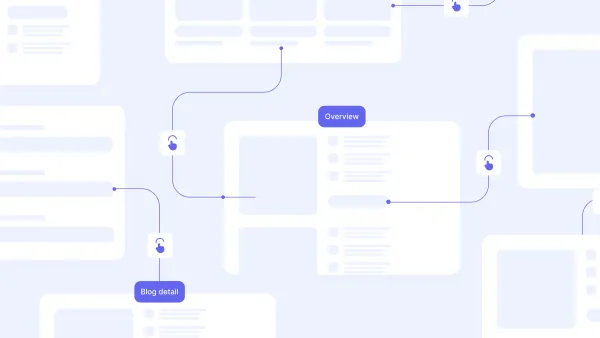Exploring the Iterative Model & MVP Products
Launch smarter with MVPs and iterative development. Deliver value early, gather feedback, and improve continuously.

We often introduce our clients to agile methodologies when building websites or applications, and it’s not always a familiar concept. While agile practices have been a cornerstone of software development for years, accepting the concept can be a big shift for business owners who are used to thinking about launching a final product, all at once.
Here's what our experience has shown: embracing an iterative model—launching smaller versions of a given site or product quickly and frequently—leads to better long-term outcomes. This sort of initial product version is also commonly referred to as a minimum viable product (MVP).
MVP Agile Development: Cleaner Code, Better Business
Agile isn’t just about breaking projects into sprints and deploying more frequently. One of the biggest advantages of MVP agile development is that it leads to cleaner, more maintainable code. By focusing on smaller chunks of work and testing features as they’re built, we can catch bugs early, stay relevant to the demands of daily business operations, and ensure a site or app remains easy to scale over time.
Why Should a Business Owner Care?
Great question! Business owners tend to appreciate an agile iterative model because maintainable code means fewer product surprises down the road. Iterative development makes updates simpler, reduces the risk of breaking something critical, and allows the digital product to evolve seamlessly as a company grows.
The Stablest Approach: Trunk-Based Development
We actually like to take agile one step further with an approach called trunk-based development. This means that our DevOps and Development teams work from a single, stable codebase while aiming to ship production-ready code every day. Sounds intense, right? It certainly can be, but this method also ensures we’re prepared to launch at any time and under any conditions, no matter the stage of the project.
Shipping often means constant evolution and improvement on a given website or app, allowing the business to more quickly deliver new and exciting features to their users. Instead of waiting months to roll out a big update, these small but constant improvements coming down the pipeline keep a company's digital presence fresh and ahead of the competition.
Launching an MVP Website Isn't a Single Event
Building a website or application doesn’t have to be a single, dramatic launch. In fact, it’s better to think of it as a series of launches. You might start with a basic version of your site—one that focuses on core functionality—and then add features over time based on user feedback and/or evolving business needs. This approach is common for products and applications, and we’ve found that it’s incredibly effective for websites too.
It can be challenging to backtrack after launching a product with specific functionality, especially for websites with complex features or integrations. Replacing such properties all at once can also be risky. This is another reason we favor an iterative strategy. At Chek Creative, we roll out sections incrementally, ensuring smooth transitions without disrupting the user experience.
This approach allows for deploying new features and content in three ways:
- Subdomains
- Ideal for testing new functionality without impacting the main site
- Requires careful SEO management to maintain authority and avoid dilution
- Subdirectories
- Keeps everything under one domain
- Helps consolidate SEO value while gradually phasing in changes
- Staged Deployments
- Rolls out features in smaller updates directly on the primary
- Reduces risks and maintains continuity
The trunk-based development approach ensures continuous improvement without the stress of a large overhaul. We also manage SEO carefully throughout the process—redirecting traffic, maintaining rankings, and avoiding confusion—so that your digital presence can evolve without setbacks.
Building Products with the Same Mindset
While launching websites iteratively is a fantastic strategy, it’s even more valuable when building digital products. Why? Because products that evolve based on real user data perform better over time. Agile methodologies ensure that product development remains flexible, responsive, and aligned with actual user needs.
By shipping small features early and often, we get to see real-world feedback much sooner. This can better inform any decisions to pivot, adjust, and/or optimize a product while its in development. The iterative development approach prevents stagnation and keeps users engaged.
The Power of Early and Frequent Launches
At Chek Creative, we believe in shipping early and often because it allows us to keep our work sharp and aligned with your business goals. Whether it’s a website, an application, or a digital product, launching iteratively ensures that your online presence is always evolving and improving. In a fast-paced digital world, this mindset is key to long-term success.




